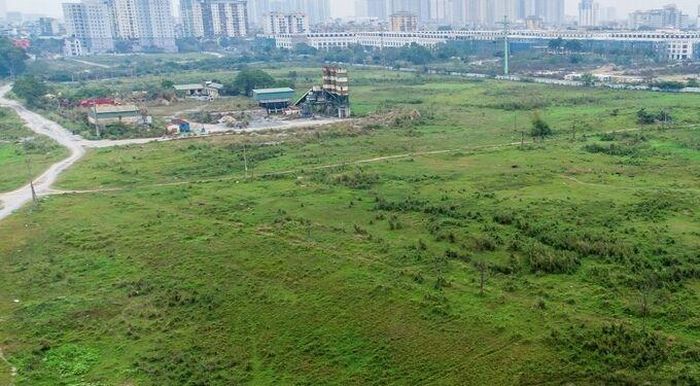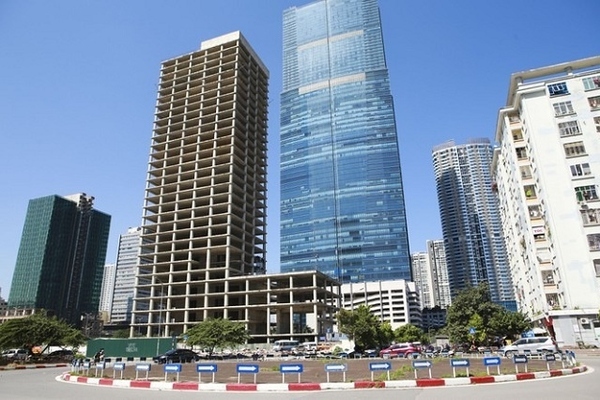Hà Nội Faces Consequences from Thousands of Delayed Projects and Unused Land
The city of Hà Nội is currently grappling with the aftermath of over thousands of delayed non-budget projects. Many of these projects have been left hanging for years, occupying prime locations in the city center.
The Lingering Projects in Hà Nội
One such example is the Thịnh Liệt New Urban Area project in Hoàng Mai District, Hà Nội. In 2004, the Hà Nội People’s Committee issued a decision to withdraw more than 35 hectares of land in Thịnh Liệt, Hoàng Văn Thụ, and Tương Mai wards, and assigned the Construction and Infrastructure Development Corporation (Licogi) to investigate and prepare for the implementation of the Thịnh Liệt New Urban Area project. However, until now, the project remains stagnant and unresolved for many years.

Dự án Khu đô thị mới Thịnh Liệt has been abandoned for many years.
Another case is the 409 Linh Nam residential and commercial office project in Vĩnh Hưng Ward, also in Hoàng Mai District. After 15 years, the project has only materialized on paper, with no actual construction or development taking place.
According to Vũ Tuấn Đạt, the Director of the Land Development Center in Hoàng Mai District, “This abandoned land has had a significant impact on the urban landscape and the lives of residents. Although someone has been assigned to manage the area, there have still been violations.”
These two projects are just a fraction of the more than 700 delayed projects throughout the city. Other areas with numerous delayed projects include Mê Linh, Nam Từ Liêm, and Hoàng Mai.
Some notable examples include the Vicem Operation and Trading Center project in Nam Từ Liêm District, with an investment capital of over 2,500 billion VND. This project commenced in May 2011. There is also the Trấn Sông Hồng-Song Hong City project (60,000m2) in Phúc Xá Ward (Ba Đình District) and Yên Phụ Ward (Tây Hồ District). This project, a joint venture between Hà Nội Housing Development and Investment Corporation and foreign partners, began construction and business operations in 1995.

Dự án Trung tâm điều hành & giao dịch Vicem
Trần Văn Sơn, a resident of Tây Hồ District, expressed his frustration, saying, “We are suffering greatly. The planned project has not been implemented, and our homes are deteriorating. We cannot repair or sell them. It’s difficult to live in the city center like this.”
The Consequences in Hà Nội
Having hundreds of delayed projects in Hà Nội not only causes significant economic damage and land resource waste but also leads to various consequences for the city’s urban aesthetics and environment. It becomes a barrier for a civilized and modern Hà Nội. This situation raises questions about planning and project management, as well as the assessment and approval of non-budget investments.
According to the relevant authorities in Hà Nội, the delay in addressing these “lingering projects” partly stems from the need to comply with legal regulations. Many projects undergo changes that prolong their implementation due to land policies and land clearance issues.
Some projects face legal troubles, which are currently under investigation, and conclusions from inspections are still pending. Moreover, coordination among agencies, particularly in reviewing specialized data, remains challenging.
Nguyễn Minh Tấn, Deputy Director of the Department of Natural Resources and Environment in Hà Nội, stated, “For projects showing signs of sluggishness, relevant authorities should propose measures to revoke the investment approvals in accordance with the law.”
Recently, during the 14th session of the 16th Hà Nội People’s Council, representatives strongly urged the city’s departments and agencies to thoroughly review and resolve all delayed non-budget projects that are hindering the city’s socio-economic development.
To read more articles related to finance and economics from Business Today, visit Business Today.
